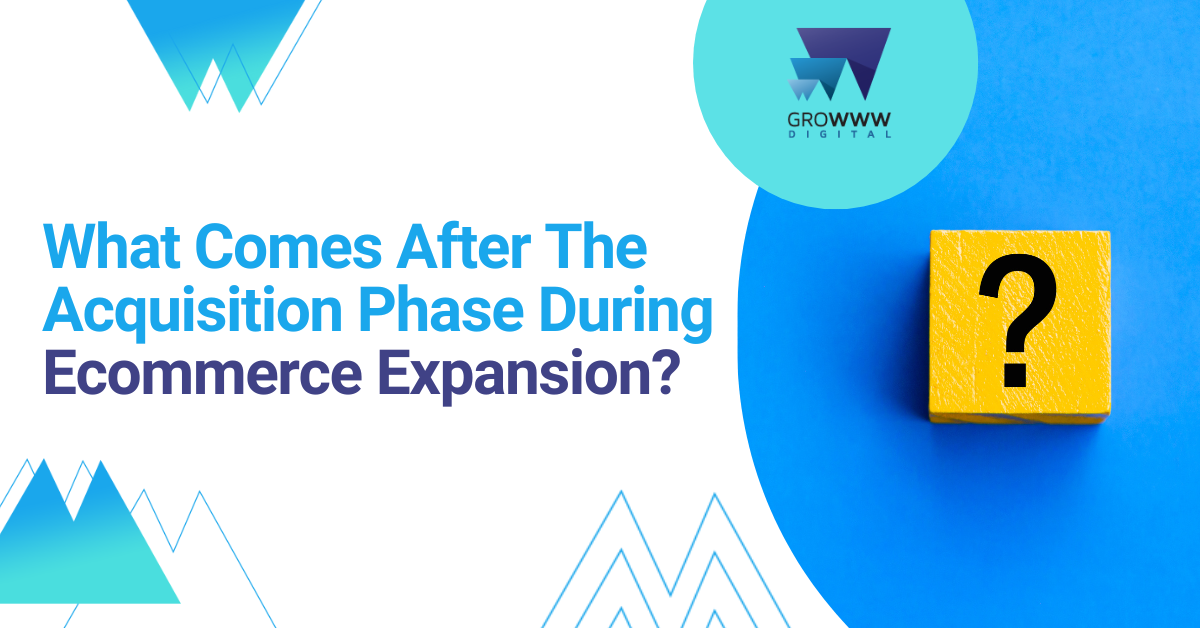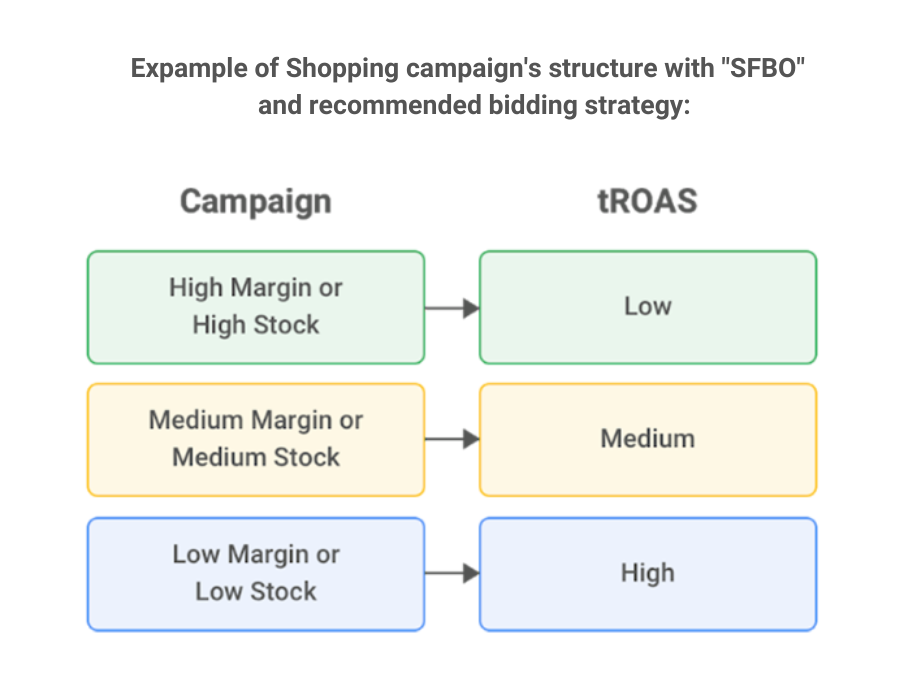
What Comes After The Acquisition Phase During Ecommerce Expansion?
What Comes After The Acquisition Phase During Ecommerce Expansion?
In this article, we are unpacking what comes after the initial acquisition phase on a new market from the standpoint of PPC. We will talk about clarifying your business objectives as an ecommerce business, what is the SFBO model, and how to map your business strategy to reach a campaign – and profit – optimisation.
Following up on our guide through the best PPC strategies for ecommerce export, let’s explore what comes after you’ve reached a certain market share through acquisition campaigns and optimised your campaigns for revenue growth.
Certainly a success of its own, how do you level up from here?
Want to expand in the region? Download Your Free Ultimate CEE Ecommerce Export Guide!
75 pages packed with all you need to know as an ecommerce business before you expand to Czechia, Slovakia, Hungary, Romania, Croatia and Slovenia.
1 – How do you know you have reached an established presence on the new market?
Other than a feeling, what metrics should you look into to be sure you have enough of a presence?
“From the Google Ads perspective, certain KPIs tell you that you’ve reached a reasonable position on the market,” Zoltán Flekács, Head of Performance at Growww Digital, leads with, “once the campaigns are set up and covering the portfolio of products, from Shopping Ads to performance and search ads, once you have all the products, categories, and relevant keywords included in the account, you have a clear idea of whom you are competing with for the same set keywords, pause for a bit.”
At this point, you know how big the market is, who your direct competitors are and where you stand in comparison to them.
“Impression share metrics tell you all that,” Flekács continues, adding that impression share refers to the ratio between how many times your ad is appearing out of 100 impressions, “reasonably, if you are not a big brand with unlimited funding available, 60-70% impression share is the maximum score available to you. If you go beyond that, it is usually at the cost of profitability.”
It’s getting expensive to push more. It’s time for something else.
2 – Defining your business objectives
It’s time to switch from a revenue growth strategy to profit optimisation. You can have different business objectives too, and we’ll get into them soon. For the majority of ecommerce exporters, profit optimisation is the goal, so let us explore how to proceed.
How to optimise your ecommerce business for profit in a foreign market
Look at your product data as well as product statistics, and ask yourself:
- Do I have the same margin on all my products?
- Do all my products experience the same seasonality?
- Do I have significantly different competitors in different product categories?
- What are my stock levels on certain products?
“Grouping your products based on some of the answers to these questions allows you to divide your products into certain categories,” Flekács recommends, “you can then go even more granular and niche the categories down to get the desired flexibility with your campaigns.”
For example, you can afford to have a lower ROAS for products with a higher margin. And for those grouped as low-margin ones?
“You can set a higher ROAS. You can remain profitable even with a bunch of low-margin products this way, instead of trying to optimise for midpoint for all products,” the performance expert at Growww Digital says.
In different ways, you are thus optimising for profit for all your products.
Apart from optimising for profit, what other objectives do online stores have?
“For certain products, you want to sell out stock, perhaps because you have limited space or a new season is approaching,” Flekács explains.
In this case, separating these products into campaigns with low target ROAS is the thing you want to do.
It is also valid to have a few products in Shopping campaigns with an excellent price for the end customer and high search volume.
“They won’t make an excellent profit, but they certainly will drive traffic to your site,” Zoltán unpacks another strategy, “you can then cross-sell or improve your basket value, therefore make a profit on other products.”
Want to expand in the region? Download Your Free Ultimate CEE Ecommerce Export Guide!
75 pages packed with all you need to know as an ecommerce business before you expand to Czechia, Slovakia, Hungary, Romania, Croatia and Slovenia.
3 – Having multiple goals? Use Google’s SFBO model
As Zoltán suggests in the examples above, ROAS and margin aren’t the only KPI’s to watch as business objectives vary for each business, each season and sometimes, for each category.
As they do not solely determine success, what we like to introduce our clients to at Growww Digital is the SFBO model for Shopping Ads. It is especially helpful when you have combined goals such as increasing your profitability as well as managing stock better.
“Combine the stock level information with the product margin and classify them together into brackets for the priority (High/Medium/Low),” Sabrina Zidour, Account Strategy Lead and Dennis Gingele, Associate Account Manager at Google Shopping suggest in the article, “then create a new Shopping campaign structure based on the stock level and margin brackets (e.g. High/Medium/Low) and set ROAS goals based on both levels. The combined low priority product campaigns get a high ROAS and high priority products a low ROAS because they are the ones we want to push.”

Source: How to optimise your Shopping campaigns to meet your business objectives in the year ahead
4 – Map your business strategy to campaign optimisation
“When you have a clearer idea (and empirical knowledge!) about your product sets and business objectives, what we can help with is to translate this information into a campaign structure and campaign optimisation that will maximise your profit, long-term,” Flekács points out.
Up to 60% YoY growth from campaign optimisation – the Primanet.hu example:
For primanet.hu we did just that. After years of focus on growth and market share we sat down to discuss what’s next. We were absolutely clear to go for profit as a business objective next and we restructured the Shopping campaigns to support that objective.
We grouped products into separate campaigns by margin levels. Each campaign then got a separate daily budget as well as a matching Target ROAS based on the historic performance and margin levels.
With the change, Shopping campaigns grew 20% in revenue during the first two months compared to the previous period, but that no longer was the primary objective. Margin growth was the new target so we monitored that – and by the next year we saw 20–60% YoY growth.
Do you need a partner to help you expand abroad? Reach out!
Partner up with a trusted digital agency when doing business abroad.
Fill in the form or feel free to contact László Szabó, co-founder and Head of Growth at Growww Digital, at szabo@growwwdigital.com or +36 30 537 7051
Want to expand in the region? Download Your Free Ultimate CEE Ecommerce Export Guide!
75 pages packed with all you need to know as an ecommerce business before you expand to Czechia, Slovakia, Hungary, Romania, Croatia and Slovenia.
